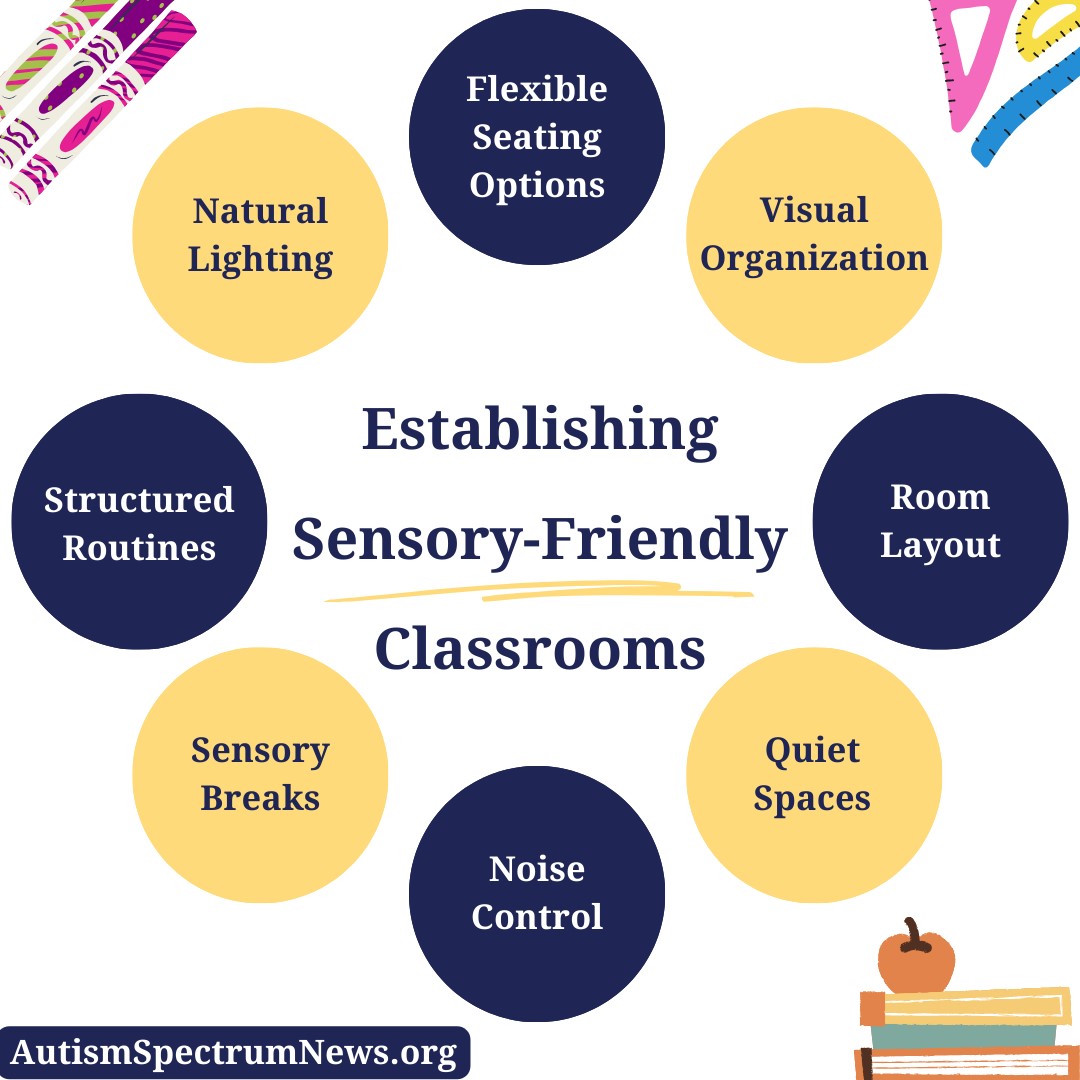
5 Tips For Teachers To Creating a Sensory-Friendly Classroom
19th September 2024
Research reveals that effective classroom layout and environment can boost student achievement by around 16%.
Imagine teaching in a classroom where each student has the confidence and encouragement to learn. The promise of a classroom that is sensory-friendly is this. How do we get there, though? The power of cooperation between educators, parents, and students will be discussed in this blog article. We'll look at doable tactics for improving learning spaces and classrooms as well as approaches to give students more autonomy over how they respond to stimuli. Come along with us to look at a few ways you can make your classroom sensory-friendly and build a more welcoming environment where all students may succeed!
5 Strategies To Create A More Sensory-Friendly Classroom For Your Students

Here are some pointers for setting up a classroom that is sensory-friendly:
1. Free Visual Overwhelm
When arranging your classroom, think about going with subdued or neutral colors to reduce visual noise. Make sure there is a good mix of visually appealing components and white space when it comes to wall displays, and make sure everything you place up on your walls has a function.
For instance, you may put daily resources like calendars, learning objectives, or visual timetables on the front walls of your classroom. Any décor can also be coordinated with the lessons you are presently teaching. In this manner, even if pupils become sidetracked by what's on the walls, they will still be paying attention to pertinent material.
Do you follow us on Social Media? We regularly share upgraded educational content, tips, feedback, and more. Check us out by clicking the profiles here - Facebook / Twitter / LinkedIn / Pinterest / Instagram / YouTube
2. Organize Classroom
In addition to making students feel at ease and in charge of their surroundings, well-organized classrooms may also help you successfully and efficiently manage your time. To guarantee that everything has a home and to organize your classroom, utilize labeled trays and tubs, dedicated storage locations, and other organizing tools.
Remember that clutter-free doesn't necessarily mean that it has to appear flawless on social media. All you have to do is pick the instruments that suit your needs.
3. Minimize Noise
There are other ways to make your classroom quieter even if you are unable to utilize rugs or provide pupils noise-canceling headphones—both of which are excellent ideas, if you can. For example, voice level displays are an excellent tool for classroom management that may assist students in understanding the appropriate voice level for each task.
Using hand gestures to request items, such as a pencil or restroom break, is another approach to promote nonverbal communication in the classroom.
4. Designate Spaces For Quiet Breaks
If for any reason your kids feel overwhelmed, they can go to a quiet spot in your classroom. When a sensory overload happens, having a place like this might help pupils reset so they can carry on with their studies.
This area can also serve as a place for youngsters to find calmness or serenity if they are having trouble managing intense feelings like tension, worry, or annoyance.
5. Flexible Teaching Options
Various students may require various things at different times, and flexible seating gives them the freedom to select what suits them best. It might be seated at a table. Alternatively, it can be seated on a bean bag chair in a more peaceful area of the space.
In either case, the premise underlying flexible seating is that students are the experts on what works best for their learning. Of course, not every classroom or budget will be able to use this option, but if you do, make sure to establish ground rules and expectations with your pupils.
Bottom Line
As educators with credentials relevant to SEN online courses, when designing sensory-friendly classrooms, make use of the tools and choices at your disposal. Once more, small modifications may have a significant impact, so you don't have to make big ones. Above all, keep in mind that your current efforts will contribute to ensuring that every one of your pupils gets the resources necessary to succeed in their educational path.
We believe education should be accessible for everyone. That’s why we don’t charge for our blogs. Find the right course that will help you in your career with us, contact us at +6621056101. You can mail us at act@asiancollegeofteachers.com
Written By : Ruchi Mehta




